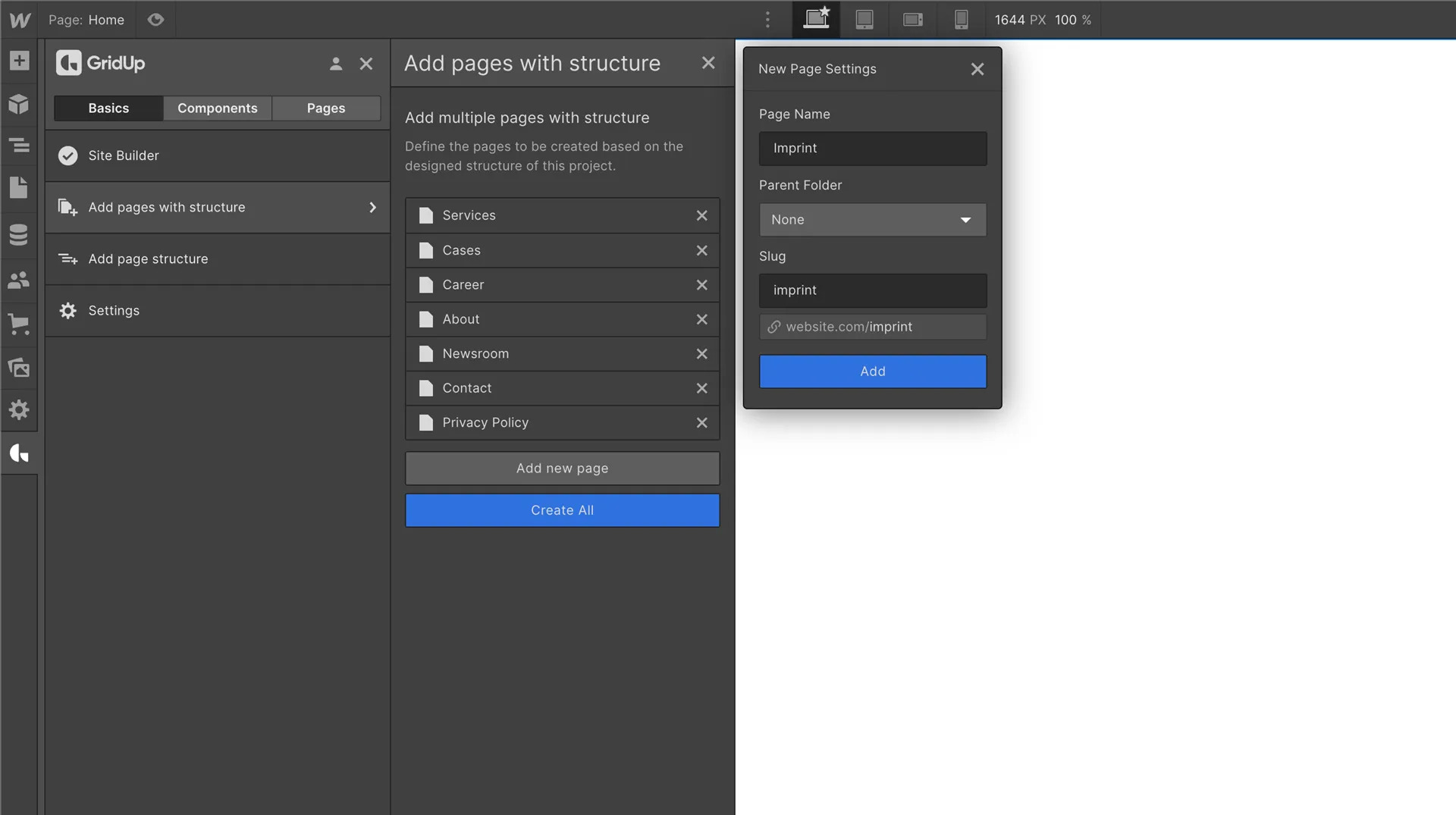Swiss startup GridUp launches automation app for Webflow

The SaaS company Webflow, which was founded in 2013, has experienced enormous growth in the last 6 months. It currently counts about 3.5 million users and 7.5 million published websites, half of which were created in the last 6 months alone.
This growth seems to be the result of many factors in the current market situation. At this year's Webflow conference in San Francisco, which took place in November, one could meet several Webflow newcomers who started their business during Covid. When asked what motivated them to do so, they often mentioned the motivation from the community that defines Webflow. The two largest of these are Flowparty and Floxies.
Many of the designers, who were often still in permanent employment until then, have been seeking personal connections through Covid and the associated separation of work location and employer, and have found them in these communities, for example. With this support, it has become easier to enter self-employment, since the members sometimes even share client projects and thus enable newcomers to have a soft start.
Those who have been working with Webflow for years know the upsides and downsides of Webflow. It allows such a high level of design flexibility, which currently cannot be achieved so quickly with any other tool. Especially designers who value pixel-perfect implementation appreciate this immensely. This is also the case for Niklas Bubori, Co-Founder of GridUp.
He was one of the first European users and has been working with Webflow for 8 years. About 5 years ago, he also started his own business with Webflow and has since built up a successful agency, which is particularly established in the luxury industry and thus addresses companies from yachting, private aviation and luxury real estate, but also serves tech clients with special design requirements, which also often include Unicorns from Silicon Valley.
Over the years, however, he has also come to know the downside of Webflow, as the flexibility has not only advantages. Due to the few restrictions and open design of the processes in Webflow, many tasks currently have to be done manually and repeatedly, which in other tools can be done as bulk operations, for example.
After optimizing his own way of working in other areas of the company and still spending a relatively large amount of time on repetitive tasks, he took a closer look at them. He found out that on average he spent more than 50% on tasks that do not add any value to the result or the end user, but are purely technical, such as manually creating all pages one by one, adding navbar and footer, and a community standardized page structure that ensures high quality of the page.
With this result, the idea and motivation for a tool to improve that was born. This resulted in GridUp, an application that is installed as a Chrome extension and automatically shows up in the Webflow Designer after installation.
With this application, Bubori resolves a lot of the repetitive tasks and makes it possible to reduce the manual setup processes from several hours to minutes. This allows Webflow developers to focus more on the details of development and implementation that require more attention than the undemanding creation of pages and architectures.
With the database of components and pages that GridUp provides, they go one step further. In fact, with this addition, Webflow users can select and insert their components directly in Webflow and synchronize them with their existing style settings through an installed style guide. By doing this, the GridUp team not only makes tedious setup processes a thing of the past, but also allows designers and teams a far less error-prone process when implementing existing designs in Webflow.
Classic component databases are already well established in the Webflow community and are used diligently. Most recently, Webflow opened up a feature that allows anyone to make their components available to others. However, with the unique centralized and synchronized approach of GridUp, a Webflow developer can professionalize his projects holistically by following a clearly structured and optimized process from start to finish.
GridUp is now available in the Chrome Webstore and can be used by Webflow users. Until the end of December, GridUp is offering a launch offer that discounts the price of an annual subscription.
Stay up to date
Thefuturehits Webflow.
Scale your work and grow your business with powerful automation in Webflow.


